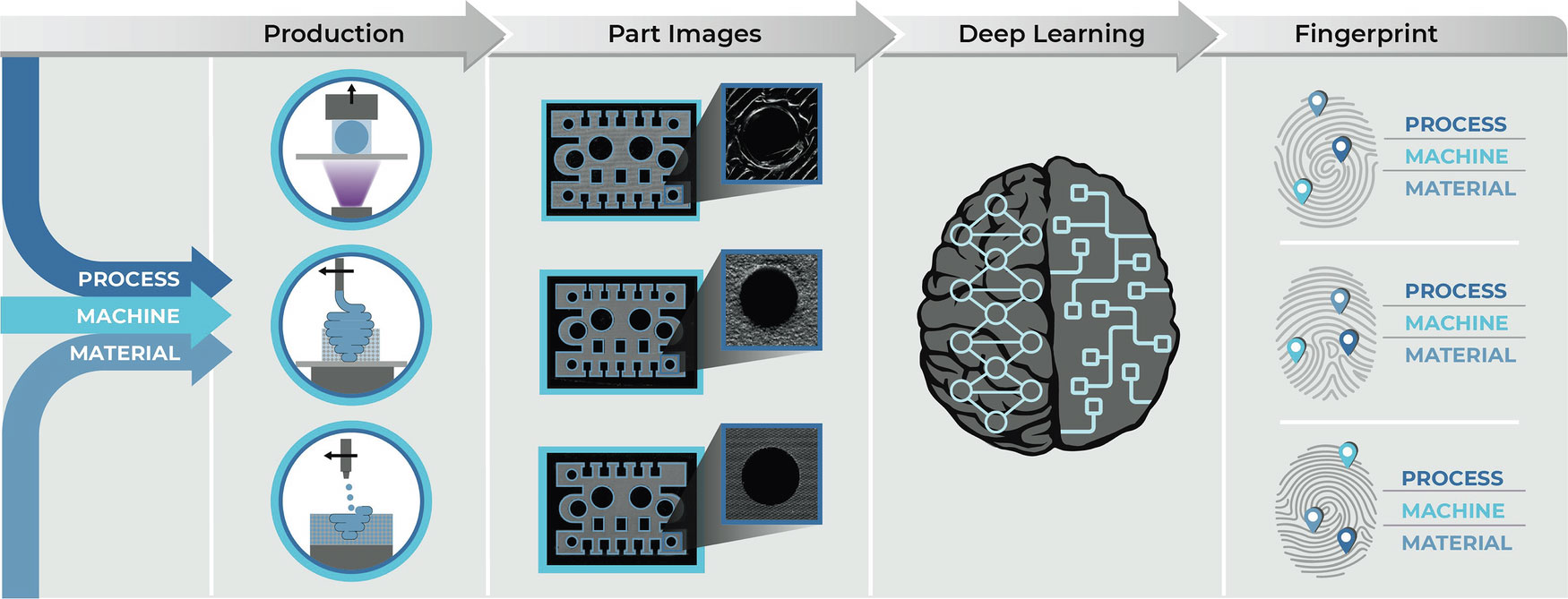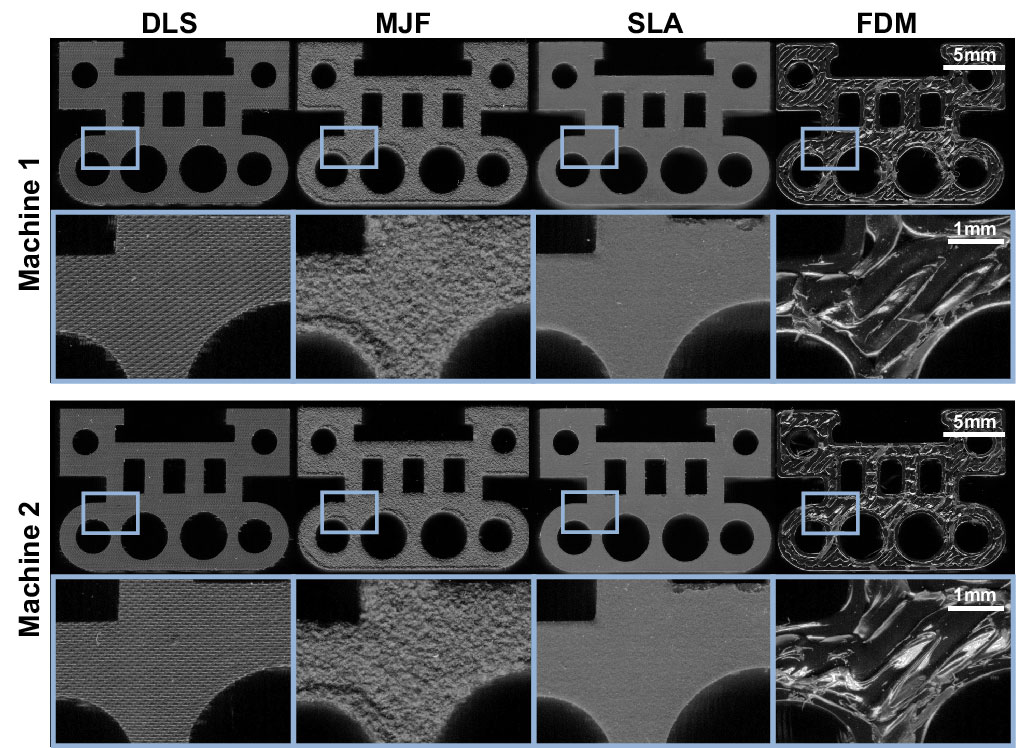Researchers have developed an AI-driven system which can pinpoint “the specific machine” following an inspection of the 3D printed parts it has produced. A Grainger College of Engineering team from the University of Illinois Urbana-Champaign say that the system could be used for managing supply chains, “detecting early problems and verifying that suppliers are following agreed upon processes.”
However, talk of the “hidden fingerprints” of 3D printers have got this Sherlock, Columbo, Monk, and Fargo fan more interested in the criminal investigatory implications of the new AI.

Implications for manufacturing, quality, and trust
Only a photograph of a part printed by a certain 3D printer is needed to verify its “unique signature... or fingerprint” says the Grainger blog. “We are still amazed that this works: we can print the same part design on two identical machines – same model, same process settings, same material – and each machine leaves a unique fingerprint that the AI model can trace back to the machine,” said Bill King, a professor of mechanical science and engineering, and the research project leader. “It’s possible to determine exactly where and how something was made. You don’t have to take your supplier’s word on anything.”
The researchers looked most closely at the (major) implications for supplier management and quality control. They described how this was important to 3D printer vendors to ensure users “adhere to a specific set of machines, processes, and factory procedures” to deliver the expected quality levels throughout the printing / production process.
In tests, smartphone photographs of 9,192 parts made on 21 3D printing machines from six companies, and with four different fabrication processes, could be fingerprinted “with 98% accuracy from just 1 square millimeter of the part’s surface.” It would be interesting to see how much more accurate the Ai could be, given a larger area to anaylze.

Beware of using your 3D printer for 'illicit goods'
Despite what sounds like a rather narrow focus on 3D printers used in factory production environments, the AI can work its magic on a far broader pool of devices.
“These manufacturing fingerprints have been hiding in plain sight,” King said. “There are thousands of 3D printers in the world, and tens of millions of 3D printed parts used in airplanes, automobiles, medical devices, consumer products, and a host of other applications. Each one of these parts has a unique signature that can be detected using AI.” We assume King's assertion includes all the printers listed in the regularly updated Tom's Hardware's best 3D printers article.
Beyond its touted use for supply chain management, the researchers say the tech could be applied to “track the origins of illicit goods.” Other than that, they don’t discuss any implications for criminal investigations. However, we’d like to see the technology used to trace the origin of a 3D printed gun discovered at a crime scene, for example.

 6 months ago
104
6 months ago
104









 English (US) ·
English (US) ·